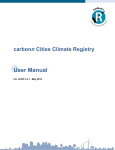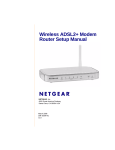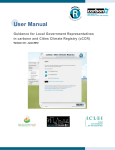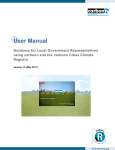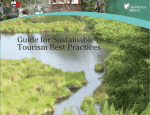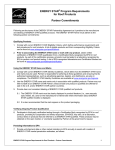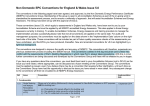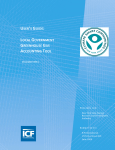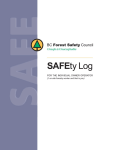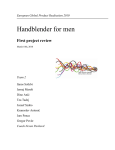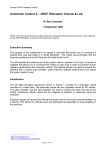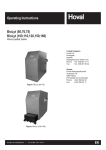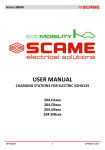Download User Manual v.4.1 Oct. 2014
Transcript
carbonn Climate Registry User Manual For cCR V.4.1 – Oct. 2014 www.carbonn.org Page | 2 User Manual – Oct. 2014 www.carbonn.org The User Manual to carbonn (Bonn Center for Local Action and Reporting) and the carbonn Climate Registry is published by ICLEI-Local Governments for Sustainability. It is targeted at all Local and Sub-national Governments wishing to register with the carbonn Climate Registry. The Manual guides Local Governments through the registration process, provides assistance for the input of local climate data and gives a general overview of the reporting system. The User Manual to the cCR v.4.1 provides an updated guidance as of May 2014. Please check for the latest version at http://carbonn.org/. Any feedback and proposals for improvements should be brought to the attention of the carbonn Team at the ICLEI world Secretariat, [email protected]. Page | 3 User Manual – Oct. 2014 www.carbonn.org Content 1. Why join the carbon Cities Climate Registry? ....................................................................... 6 a) Credibility ............................................................................................................................. 6 b) Visibility and recognition ....................................................................................................... 6 c) Find inspiration ..................................................................................................................... 6 d) Use latest technical framework ............................................................................................. 6 e) Engage in global climate advocacy ...................................................................................... 6 1.1 History........................................................................................................................ 7 1.2 Mechanisms and partnerships supporting the reporting of local climate action ........... 8 1.3 Main modifications since version 4.0 of the cCR ........................................................ 8 2. Methodological framework.................................................................................................... 9 2.1 Preventing Double Counting due to Electricity Production by Local Community ......... 9 3. Platform content and structure ............................................................................................11 3.1 Overview ...................................................................................................................11 4. Creating an account and login in .........................................................................................12 5. City information ...................................................................................................................15 5.1 General Information ..................................................................................................15 5.2 Community Information .............................................................................................15 5.3 Municipal Administration Information .........................................................................16 5.4 Affiliation ...................................................................................................................16 5.5 Additional information ................................................................................................17 ............................................................................................................................................19 6. Commitments (Government and community) ......................................................................19 7. City Performance ................................................................................................................23 ..................................................................................................................................26 7.1 Government Performance .........................................................................................26 7.2 Community Performance...........................................................................................30 8. City Actions .........................................................................................................................33 Field name ................................................................................................................................33 Option .......................................................................................................................................33 Definition / Example ..................................................................................................................33 Page | 4 User Manual – Oct. 2014 www.carbonn.org 9. Annexes ..............................................................................................................................42 9.1 cCR - reporting standards emissions sectors matching table ....................................42 9.2 City Report ................................................................................................................44 9.3 Terms and Conditions ...............................................................................................47 Page | 5 User Manual – Oct. 2014 www.carbonn.org 1. Why join the carbon Cities Climate Registry? Developed by ICLEI Local Governments for Sustainability and the Bonn Center for Local Climate Action and Reporting, the carbonn Climate Registry (cCR) is the leading global reporting platform of local climate action (mitigation and adaptation), enabling cities and Local Governments to demonstrate their power and potential to reduce climate risks and move towards global lowemission and climate resilient development. Local and Sub-national Governments are invited to consider several issues when exploring reporting through the cCR: a) Credibility The cCR promotes transparency, accountability and comparability of local climate action for local and other subnational governments. This is part of improving an MRV approach Measurable, Reportable, Verifiable. b) Visibility and recognition Be recognized as a leading community that publicly shares its commitments, progress and actions - put your community on the map! c) Find inspiration The database of the cCR contains thousands of entries. Find action examples, get ideas from others, and accelerate your own community local climate action. And share your own exemplary d) Use latest technical framework The Bonn Center for Local Climate Action and Reporting ensures that the cCR remains compliant with the international frameworks of such as the Global Protocol for Communityscale Greenhouse Gas Emissions (GPC 1.0). – moving towards a standard for community level GHG accounting and reporting. e) Engage in global climate advocacy The cCR is a key instrument of the Local Government Climate Roadmap, a global climate advocacy process for sub-national governments around the globe, aimed at raising the global level of ambition through local climate action. The underlying aim is to empower local action and ease city access to global climate funds. cCR annual reports are presented at key events in the United Nations Framework Convention on Climate Change (UNFCCC) www.iclei.org/climate-roadmap Page | 6 User Manual – Oct. 2014 www.carbonn.org 1.1 History The carbonn Climate Registry (cCR) was launched at the World Mayors Summit on Climate in Mexico City on 21 November 2010, as the global response of local governments to measurable, reportable and verifiable (MRV) climate action. The 2011 Annual Report of the carbonn Climate Registry was released on 5 December 2011 in Durban, S. Africa at the United Nations Durban Climate Conference. The report analyzed the data provided by the 51 cCR Reporting Cities as of 15 November 2011, based on the guidance of User Manual v.2. The report was also strengthened by the release of 2011 Annual Report of Mexico City Pact. Furthermore, Durban Adaptation Charter was adopted at the end of Durban Local Government Convention that was held on 2-4 September 2012. On 9 February 2012, Local Government Climate Registry Japan was launched as the first national supplement of carbonn Climate Registry. On 23 March 2012, ICLEI and WWF announced that cCR would become the reporting platform of Earth Hour City Challenge. After two successful collaborations, the cCR is again the reporting platform for EHCC 2014-2015. The respective procedures and criterion for engagement of cities in the EHCC is separately explained in Instructions for Earth Hour City Challenge Candidates. In November 2012, ICLEI released the cCR Annual Report November 2012 Update. As of March 2014, 422 cities and local governments representing a population of 406 million inhabitants and controlling community GHG emissions of over 2.25 GtCO2e/yr reported 830 climate and energy commitments, 771 GHG inventories and 4208 mitigation and adaptation actions and action plans at the cCR. For 2014, while existing collaborations have been renewed with all partners, the cCR is inaugurating three new partnerships with the Durban Adaptation Charter, R20 - Regions of Climate Action and the EcoMobility Alliance. Page | 7 User Manual – Oct. 2014 www.carbonn.org 1.2 Mechanisms and partnerships supporting the reporting of local climate action 1. Voluntary reporting pursuant to a global political commitment Article 4 of the Global Cities Covenant on Climate (The Mexico City Pact) aims to enhance measurable, reportable and verifiable local climate action. The number of Mexico City Pact Signatory Cities reporting to the cCR increased by 40% in 2012. New in 2014, the cCR is now the official reporting platform for the signatories of the Durban Adaptation Charter (DAC). 2. Capacity building at the national level Local Government Climate Registry Japan is a good example of what can be achieved when national and local stakeholders partner to leverage reporting capacity directly tied to a global initiative. Japanese local governments reporting to the cCR represent approximately 84% of the population and close to 74% of Japan’s greenhouse gas (GHG) emissions. Other mechanisms supporting the cCR include collaboration the EU founded Urban-LEDS project and PACMUN. New in 2014, a partnership with R20 - Regions of Climate Action encourages R20 members to register on the cCR to report climate actions. New in 2014, The carbonn Climate Registry is also taking a new sectoral approach by supporting the reportin g of commitments and actions focusing on integrated, socially inclusive, and environmentallyfriendly transport options. This will be supported by a partnership with the EcoMobility Alliance. 3. Creating incentives The World Wide Fund for Nature (WWF) Earth Hour City Challenge acts as a powerful incentive to motivate local governments to openly share their progress in climate actions and highlights the value of stakeholder involvement. In 2012, Earth Hour City Challenge (EHCC) Candidates already made up 21% of the total number of cCR Reporting Cities, as well as 49% of the reported mitigation and adaptation actions. 1.3 Main modifications since version 4.0 of the cCR This new version of the User Manual provides an updated guidance to visitors and reporting participants for the use of the cCR website and reporting platform v.4.1 cCR v.4.1 is a minor update since version 4.0. Despite the introduction of a new look for the website and the reporting platform, the general structure of the cCR remains the same with the four sections “city info”, “Commitments”, “Performances” and “Actions” still forming the backbone of the reporting system. Page | 8 User Manual – Oct. 2014 www.carbonn.org 2. Methodological framework In the cCR commitment, performances and actions sections allow the differentiation between two levels of activities or “boundaries. As shown by the diagram, boundaries of the two entities are different but related. The majority of emissions from local government operations are usually a subset of the community emissions. Moreover, data on greenhouse gases reported in City Performances, Commitment and actions sections refer to emissions or reductions of greenhouse gas happening within the jurisdictional area of the city meaning that trans-boundary emissions should not be taken into consideration in order to avoid double counting at the local level. Further developments of GHG emission protocol should address this type of issues. 2.1 Preventing Double Counting due to Electricity Production by Local Community Community emissions Geopolitical boundaries of the local government Government emissions In countries where electricity is provided through a national grid system, GHG emissions due to electricity consumption in buildings, facilities and transport systems should be considered as Scope–2 (indirect electricity) emissions since combustion of fuels that lead to GHG emissions occur outside the boundary of local community. The GHG emission factor of national electricity grid usually takes into account emissions due to transmission and distribution losses as well. There are cases where local communities own or operate local power plants (e.g. thermal power plants that engages combustion of coal, gas or fuel oil or renewable electricity generation from waste-to-energy, hydro, solar, biomass, wind) as well. GHG emissions from each of these sources should be calculated by taking into account Community trans- boundary emissions Page | 9 User Manual – Oct. 2014 Government trans-boundary emissions www.carbonn.org their specific emission factors. GHG emissions from these sources should be considered as Scope-1 emissions. In such cases, an adjustment is necessary to prevent double counting of these Scope-2 and Scope-1 emissions. These procedures are not applied to power plants that are designed for national electricity production. GHG emissions from energy consumption of these plants should be accounted as Scope-1 emissions without any adjustments. Scenario-1: Limited local electricity production This is the case where electricity production of local community is less than their total consumption through national grid. In such cases, no change is necessary for Scope-1 emissions from local power production. However Scope-2 emissions from buildings, facilities and transport systems should be adjusted. This is achieved by subtracting the amount of locally produced electricity from total electricity consumption through the national grid system and multiplying the remaining amount of electricity consumption with the national grid emissions factor. The amount of subtraction should be apportioned if it is not possible to track amount of local electricity consumption in each sector. Scenario-2: Excess local electricity production This is the case where local electricity production of community is higher than their total consumption through national grid. In such cases, Scope-2 emissions from buildings, facilities and transport systems should be calculated by taking into account the GHG emission factor of the local electricity production. For Scope-1 emissions from local power plants, adjustment is necessary for both total electricity production and local GHG emission factor. Adjusted amount of electricity production should be achieved by subtracting the amount of locally consumed electricity from total electricity production. Adjusted GHG emission factor should be achieved by subtracting national grid emissions factor from local emisson factor. The adjusted Scope-1 emissions of local power plants should be calculated by multiplying the adjusted amount of electricity production with the adjusted GHG emission factor. It might be possible that the adjusted GHG emission factor might have a negative value, if carbon content of local electricity production is less than that of the national grid. In this case, a negative value of Scope-2 emissions from power plants should be recorded which helps the local community to reduce their carbon footprint. Calculations for prevention of double counting from locally generated heat or cooling should follow the same principle. Page | 10 User Manual – Oct. 2014 www.carbonn.org 3. Platform content and structure 3.1 Overview There are four reporting areas in the cCR, City info, Commitments, Performance and Actions. Table 1 provides an overview of the content of each section. CITY INFORMATION COMMITMENTS PERFORMANCES ACTIONS Local Government Name City commitments Inventory Year Measure Title Population Boundary Administration information Focus of the action Census year Type Community information Type of actions Population forecast Target Value % Emission sectors Boundary City budget Base Year Document upload Action sectors Region Target Year Confidentiality of data Methods Geography Target Adopted in Scope 3 analysis Finance Software Tool Used Status Community Type Expert Adoption Year of Project Location and size Has the GHG inventory been verified? Anticipated Delivery Year Predominant economy sector Total Final Energy consumption Affiliations Quantified achievements of the action Background information Summary Document upload Co-benefits Page | 11 User Manual – Oct. 2014 www.carbonn.org 4. Creating an account and login in Joining the cCR and data input into the system will take place on the carbonn Climate Registry website accessible at www.carbonn.org. If you are new to the cCR and need to open an account, click on JOIN in the top menu and choose your type of registration. If you are an official representative of your local government select the “voluntary reporting” option. If not, click on visitor. You reach the login page by clicking on LOGIN in the navigation menu. Note for Earth Hour City Challenge candidates: If you are a new user of the cCR, follow the link in the top menu under “JOIN” / “WWF Earth Hour City Challenge 2014”. If you are already a cCR user and would like to become an EHCC candidate, you do NOT need to create a new account, simply send us a request at [email protected] and we will enroll your city. For more information about the Challenge we invite you to read the “Instructions for Earth Hour City Challenge candidates” brochure available on the cCR website under “PARTNERSHIPS”/”EHCC 2014” or to follow one of our monthly webinar. Page | 12 User Manual – Oct. 2014 www.carbonn.org If you are a government representative, on the next page is the following registration form: The registration form comprises three parts: a) Contact information for the person who will be inputting the local climate data (most likely to be technical staff, such as the climate change coordinator or the energy manager, or even an external consultant); b) Contact information for the person in the local government who is authorizing the data input (such as the head of the climate change or energy department); and c) Mayor´s Information DON´T FORGET TO PRESS “ENTER” IN ORDER TO SAVE EVERY ENTRY IN THE SYSTEM! 1) First of all, please input the name of your local government in English. This information will later be used to identify your local government, e.g. in the city search, and will appear on the city reports. Please use the name that most people are acquainted with, such as:“Mexico City” for “Ciudad de México” 2) Registration will commence once all information is provided and the local government approves by ticking appropriate boxes. Text of Terms and Conditions are provided as Annex of this document. 3) Once the above procedures are completed, an automated message appears on the screen informing that a message to advance the registration is sent to the email address of the “Designated Contact Point”. 4) Registration email will be sent from “Your Carbonn Team”, [email protected] with a subject line “Please confirm your registration with cCR users”. (In case you do not receive this confirmation email from carbonn, please check the emails in your spam folder.) Page | 13 User Manual – May 2014 www.carbonn.org 5) The link that leads to the cCR homepage should be followed to complete registration. 6) Once logged out from the system, a second email will be sent from “Your Carbonn Team”,[email protected] with a subject line “You have successfully registered with the carbonn Climate Registry”. This message will include a user specific password which has to be used in the next login at http://carbonn.org/login/ From that time on, the local government is recognized as “cCR Registered City” at http://carbonn.org/data/ To access the online reporting form, log into the cCR using your username (email address) and allocated password. Then select DATA INPUT in ACCOUNT from the navigation menu. From the ACCOUNT menu, you can also modify your user settings such as password or email address of the designated contact point. Please keep these information updated and share them with the persons in your organization who will be responsible for reporting the data. From the account Welcome page, users can also access guidance documents such as methodologies, offline reporting sheets or this user guide but also and previous reports. Page | 14 User Manual – May 2014 www.carbonn.org 5. City information 5.1 General Information PRESS “EDIT” TO BE ABLE TO MODIFY THE FORM AND “SAVE” IN ORDER TO SAVE EVERY ENTRY IN THE SYSTEM! 1. Local Government Name (English)*: English name for your local government (if available) otherwise the name it is generally known by. (This is the name that will be referred in the Google Map of the City Climate Report) 2. Local Government Legal Name*: Full legal name in your local language. 3. Region*: Available options are: Asia, Africa, Europe, Latin America, North America, Oceania 4. Geography*: Select the attribute(s) that best describes the geography of your city. Available options are: Coastal, Dryland, Highland, Lowland, Mega Deltas, Small Island 5. Economy*: Select the predominant type of economy of your city. Available options are: Industry & Manufacturing, Services, Agriculture & Fishing 6. Community Type*: Select your city’s type of community. Available options are: City Municipality, Country / Province1, District Municipality, Metropolitan Municipality, State / Prefecture / Province2, Town/village 7. Community GDP (USD)*: Provide the Gross Domestic Product for your community 8. City logo*: in .jpg format which will be used in relevant documentation of carbonn and cCR 5.2 Community Information 1. Population*: As of last census, will be used in the city report. Please note that another population field exists in the performance section so that a new population can be entered for each inventory year. Page | 15 User Manual – May 2014 www.carbonn.org 2. Census Year*: 3. Population forecast: If available please provide population forecast by 2050 and or 2020. 4. Latitude: Enter the latitude of your city in decimal degrees. CORRECT: 5. Longitude: Enter the longitude of your city in decimal degrees. Latitude -33.9253 6. 1. 2. 2 About geographic coordinates Use decimal degrees: Size of Area: Enter the size (km ) of the territory under the jurisdiction of the local government. Longitude: 18.4239 5.3 Municipal Administration Information WRONG: 33° 55′ 31″ S, 18° 25′ 26″ E Budget of City Council (USD): Enter the total budget approved by the City Council for the operations of the city administration (in US $). Number of Employees: Enter the total number of directly hired employees Please note that these entries should be reflecting the information as of the latest available year or the year that Government Emissions inventory is prepared for. 5.4 Affiliation This section is related to membership of your city to national, regional or global initiatives. Please tick as appropriate or indicate any other initiative that is not listed here. 1. Are you an ICLEI member?: Please tick the box if yes 2. Local, National and Global initiatives: Indicate your involvement in any urban initiative (you can choose more than one option) C40 UCLG Durban Adaptation Charter Resilient Communities for America R20 – Regions of Climate Action Mexico City Pact UN ISDR “My City is Getting Ready” Other national initiative Other global initiative Page | 16 User Manual – May 2014 www.carbonn.org 5.5 Additional information Availability of the below information provides a better understanding of the local government context and greatly improve the quality of the analysis performed at the end of each year. Local governments can consult with their community stakeholders, business groups or other governmental bodies in order to compile these data. Mitigation information: Total floor size of residential, commercial, institutional buildings (m2) Number of passenger cars registered (within jurisdiction of the local government) Capacity of public transport (commuters/day) (total figure as a result of bus, train and marine services) Breakdown of public transport (% by bus, train, marine) (data can be entered as XX-YY-ZZ) Amount of solid wastes generated (ton/day) (that should refer to all solid wastes that are recycled, managed (landfilled, incinerated, composted) and unmanaged (open dumping) Area of parks, recreational areas, urban forestry km2 Number of manufacturing facilities Capacity of fossil and nuclear power generation plants in MWh Capacity of renewable energy production in MWh Adaptation information: Page | 17 User Manual – May 2014 www.carbonn.org Damage to urban infrastructure due to extreme weather events Increased threats to public health Reduced water supply and damage to natural ecosystems Increasing economic loss Increased urban heat island effect Coastal erosion Other Indicate Top3 of key drivers of your adaptation actions (choose max. 3) Reducing economic impacts Reducing damage to public health Being prepared for future climatic conditions Meeting local development goals Securing local public services Demonstrating leadership Other You can then choose with which section you want to continue: Commitments, Performance or Actions. Remember to save every new entry before moving to another tab. Page | 18 User Manual – May 2014 www.carbonn.org 6. Commitments (Government and community) On the commitment overview page, you can see the list of existing commitments. From here, you can decide to create, edit or delete entries. Click ADD NEW to add more commitments. The boundary or scope of a commitment depends whether it affects only government operations or the whole community (including government operations). In the logic of the cCR, commitments are quantifiable targets set by local government to address the consequences of human induced greenhouse gas emissions. The first step is to define the boundary of the commitment. The cCR accommodates four different type of targets that can be expressed in the following ways: CO2 Reduction (takes into account only CO2 emissions). (The target is set against a base year consumption level or against a business as usual scenario BAU) CO2e Reduction (takes into account all CO2equivalent of all 6 Kyoto Protocol gases – CO2, CH4, N2O, HFCs, PFCs, SF6) (The target is set against a base year consumption level or against a business as usual scenario BAU) Carbon Intensity: reduction target of carbon emissions per unit of GDP (tCO2e/US$ 1000) or per capita. You can choose the unit in a drop down menu. (The target is set against a base year consumption level). Energy Efficiency: Commitment to using x% less energy to provide the same services (The target is set against a base year consumption level). Renewable energy: percentage of renewable energies in the overall energy consumption. The target is expressed in % of Page | 19 User Manual – May 2014 www.carbonn.org renewable energy in the total energy consumption level in a year set in the future. 1. Boundary: A commitment can apply to two different boundaries o government (= a target a local government sets for its own municipal operations) or o community (= a target set by the local government for the entire community. ( includes government operations) 2. Type: Choose the type of target you wish to record. After “Type” the data input interface changes with the choice of commitment type. 3. If CO2 and CO2e, the Reference field requests to choose between: Absolute or Business As Usual o Absolute (i.e. reducing CO2e emissions for a target year compared to a base year) o Business As Usual (BAU) ( i.e. reducing CO2e emissions for a target year, compared to the likely level of emissions of that target year if no actions were undertaken) 4. If Carbon Intensity target: the next step is to choose the unit which can be “tCO2 per unit of GDP” or “tCO2 per capita” (capita=person/inhabitant) The static fields required for most of the targets are as follows: 5. Target value in %*: Input the target value of the commitment. Targets must be recorded as a positive percentage value between 0 – 100%. 6. Target year*: Target year for the commitment. 7. Base year: Year against which the target is measured. Examples: For CO2, CO2e and Carbon Intensity the target value is the REDUCTION value, so if your emissions reduction target is a reduction of 20% of GHG emissions by 2020 compared to 2005 emissions level then the entry should be 20 for the target value, 2005 for the base year and 2020 for the target year. An energy efficiency, a target translates a commitment to using less energy to provide the same services so the value to be entered in this field corresponds to an IMPROVEMENT. If the goal is to improve energy efficiency by 50% by 2020 compared to 2005 energy consumption level then the entry in “target value” has to be 50, the base year, 2005 and target year 2020. With this type of target you have the option to enter information on your local government current final energy consumption. Page | 20 User Manual – May 2014 www.carbonn.org For renewable energy targets, the value corresponds to the targeted share of renewable energy in the total energy mix at a certain point in the future. If the target is 100% renewable energy by 2050, the entry is 100 in target value and 2020 in target year. No base year is required with this type of target. However you have the option here as well to enter information on your local government current final energy consumption which includes a question on the current share of renewable energy in the total final energy consumption. 8. Target adopted in: Year in which the commitment was officially adopted by the local government. In case of renewable energy or energy efficiency targets, the user fill in the section on Total Energy Consumption (MWh) to increase the value of your commitments Total Final Energy consumption by the government/community (MWh) 9. Total Final energy consumption the community/government (MWh) Availability of the below information provides a preliminary overview of energy consumption of the community. This can help to have a better understanding of the level of preparedness for the transition of the community to a low-carbon society. This information will not be displayed in City Climate Report. It is expected that once a community GHG inventory is prepared, these information should be readily available as well. Local governments can consult with their community stakeholders, business groups or other governmental bodies in order to compile these data. The information should reflect total consumption of fossil fuels and electricity buildings, transport and industrial Conversion to MWh: Use an online unit converter if your energy consumption data are in a different unit (MMBtu or toe) http://www.convert-measurement-units.com/conversioncalculator.php?type=energy Page | 21 User Manual – May 2014 www.carbonn.org operations and should be reported in Megawatt hours (MWh). a. Fossil fuels – solid (coal etc.) b. Fossil fuels – liquid (oil etc.) c. Fossil fuels – gas (natural gas etc.) d. Renewables - (biofuels, biomass, solar, thermal, geothermal) e. Electricity (grid and off-grid) f. Heat g. Total (should be sum of all above) If detailed breakdown is not available, it is possible to indicate total amount of energy consumption in this box as well.) h. % renewable energy: if you do not have exact data but now the current share of renewable energy in total energy mix you can indicate that percentage here, otherwise it should be consistent with the data already entered! At the end of each entry, press the SAVE button to ensure your commitments is entered into the system, or CANCEL to abandon the transaction Page | 22 User Manual – May 2014 www.carbonn.org 7. City Performance Starting from 2013, cCR Government and Community GHG Reporting structure is adjusted to comply with the Global Protocol for Community Scale GHG Emissions, developed by ICLEI, C40 and WRI. It’s compatibility with IPCC 2006 guidelines and Covenant of Mayor Baseline Emission Inventory sheet is also improved. The annex “Emissions standards matching table for cCR” summarizes the classification of the different emission sectors from common protocols based on the emitting entity and matches them with emission sectors available in the cCR It is important to note that: Local GHG emission inventories can consist of two different categories: Government (= emissions arising from municipal operations) or Community (= emissions arising from the actions of the entire community). The data input forms are tailored to enable input of both of these inventories separately for each year. In most cases, government emissions are a subset of community emissions. The data input form enables local governments to either input emissions data for overall sectors or give a more detailed breakdown of numbers for the subsectors. The breakdown of these numbers is only available to the local government itself and will not be published. Only the emissions profile (i.e. the sectors and their contribution to the overall footprint) of a city will be displayed on individual city reports. The current input format requests the data as a sum of direct emissions (Scope 1) and indirect energy emissions (Scope 2) unless stated otherwise which are summarized in Table.1 and Table.2 For further definitions of Scopes, please refer to IEAP. In future, advanced options will be available that will allow a further breakdown. It is also recommended to exclude Scope1 emissions of power generation facilities in order to prevent double counting. Inventory data in the cCR are to be reported in tonnes of CO2equivalent (tCO2e) not MtCO2e Page | 23 User Manual – May 2014 www.carbonn.org Table.1 - Government Emissions reporting coverage in carbonn Industrial Agriculture, Waste Process Forestry and and Other Others Solid Buildings Facilities Transport Other product land use Emissions Waste Wastes use (AFOLU) Disposal (IPPU) Sectors Scope 1 (GHG emissions from consumption of fossil fuels or process related emissions) √ √ √ √ √ √ √ X √ √ √ X X X X X X X X X X √ X X Scope 2 (GHG emissions due to consumption of electricity or energy (for heating or cooling) Scope 3 (Other indirect emissions) GHG Table.2 - Community Emissions reporting coverage in carbonn Sectors Residential Commercial Industrial Industrial Process and product use (IPPU) Transport Agriculture, Forestry and Other land use (AFOLU) Page | 24 User Manual – May 2014 Waste Solid Waste Disposal Other Wastes Other Emissions www.carbonn.org Scope 1 (GHG emissions from consumption of fossil fuels or process related emissions) √ √ √ √ √ √ √ √ √ √ √ √ √ X X X X X X X X X X X √ X X Scope 2 (GHG emissions due to consumption of electricity or energy (for heating or cooling) Scope 3 (Other indirect emissions) Page | 25 User Manual – May 2014 www.carbonn.org 7.1 Government Performance Choose the CITY PERFORMANCE tab to view previous entries about your city’s Government or Community GHG emissions inventories or to add, delete or modify an entry. You can navigate with the radio button on top of the page between inventories for your GOVERNMENT or COMMUNITY emissions. Enter the emissions of each sector in tons CO2 equivalent including CO2, CH4 and N2O (except the F-Gases field where you can report on any HFC, PFC, SF6 gases). All entries should indicate sum of GHG emissions (tCO2e) from Scope 1 and Scope 2, unless otherwise stated. Note that you can choose to report, either; - as one single value for the Sector or provide detailed breakdown by Sub-sector which automatically adds up to Sector sum (click the “plus”sign to access sub sectors) 1. Inventory year: Select the year of your GHG emissions inventory. 2. Municipal administration information: a. Number of employees b. Budget of local government as of inventory year c. Municipal Administration Energy Consumption as of inventory year in MWh. 3. Buildings: sum of GHG emissions from residential and nonresidential buildings. a. Residential buildings: e.g. houses, dormitories. b. Non-residential buildings: e.g. office buildings, hospitals, schools, libraries, community amenities, etc. Page | 26 User Manual – May 2014 www.carbonn.org 4. Facilities: sum of GHG emissions from power generation, streetlights and traffic signals, energy related emissions of wastewater facilities and other facilities. a. Power generation facilities: power generation facilities owned or operated by the local government. In case administration owns a fossil fuel powered electricity generation facility and if total electricity consumption is higher than the amount generated, it is recommended to exclude Scope1 emissions to prevent double counting. Please refer to point 2.1 of this manual for further explanations on double counting. b. Street lighting and traffic signals: street lights and traffic lights owned or operated by the local government. c. Wastewater facilities (energy related): emissions from fuel and electricity use in wastewater treatment facilities owned or operated by the local government. d. Other facilities: other facilities owned or operated by the local government, e.g. Asphalt production. 5. Transport: sum of GHG emissions from transit and non-transit vehicles. a. Transit vehicles: e.g. Government's cars, ambulances, police cars, public transport (if owned or operated by the local government), including local transit systems. b. Non-transit vehicles: e.g. Construction Cranes. 6. Industrial Process and Product Use (IPPU): Sum of process related GHG emissions from: a. Mineral, chemical, metal industries b. Non-energy products from fuel and solvent use c. Electronic industry d. Product use as substitutes for ozone depleting substances Page | 27 User Manual – May 2014 www.carbonn.org e. Other product manufacture and use 7. Agriculture, Forest and Other Land Use (AFOLU): all emission from: a. Livestock (Enteric management) fermentation and b. Land (Forest, cropland, settlements, Other lands) grassland, c. Aggregate sources sources on land. non-CO2 and manure wetland, emissions 8. Wastes: sum of GHG emissions from waste operations. a. Solid waste disposal: Emissions from solid waste disposal, including waste from previous years. b. Biological treatment of solid waste c. Incineration and open burning d. (Waste) water treatment & discharge (direct emissions): Process related emissions. 9. Other emission: sum of GHG emissions from other sources. a. F-Gases: Emissions of HFC, SF6, and PFC from all sources (refrigerants production, aluminum production, etc.). b. Fugitive emissions: Emissions from transport of flaring of gas, oil and coal. If you do not wish to publicly display absolute GHG emissions values, please indicate by ticking relevant box. You can submit an additional document in .doc or .pdf format that will support your inventory. If available, you can also submit a Scope3 analysis of your government GHG emissions in .doc or .pdf format. Page | 28 User Manual – May 2014 www.carbonn.org 10. Supporting information: a. Supporting documents*: In order to increase the quality of the data, local governments are required to upload at least one supporting document proving the existence of a GHG inventory calculation process. b. Global Protocol for Community-scale GHG emissions (GPC): Cities selected to test the pilot version of the Global Protocol for Community Scale GHG Emissions can upload their GHG inventory here. c. Covenant of Mayor GHG emission inventory: Signatories to the CoM have the possibility to upload their GHG emission inventory using the official CoM excel reporting sheet. In this case they do not need to fill in the data for emission sectors in the cCR performance data entry form. d. Internal expert: Please give the name of the Local Government staff working on the GHG emissions inventory. e. External expert: If you have worked with an external service provider to reach your GHG emissions baseline, please give the name of the company or individual consultant. f. Has your GHG emissions inventory been verified? Please tick, if you had your inventory verified by a third party. g. Verifier Name: Please give the name of the company or consultant who has verified the inventory. h. Software tool used: If you used software for your GHG emissions accounting, please input the name of the software (e.g. HEAT, ECORegion, etc) Remember to SAVE your entry before leaving the page. Once you save your inventory, the overview table presents % share of each sector and total tCO2e of overall sum. You are then redirected to the commitment overview page, where you can EDIT or DELETE your entry. You can click ADD NEW button if you would like to add more government GHG emissions inventory. Page | 29 User Manual – May 2014 www.carbonn.org 7.2 Community Performance Enter the emissions of each sector in tons CO2 equivalent including CO2, CH4 and N2O (except the F-Gases field where you can report on any HFC, PFC, SF6 gases). All entries should indicate sum of GHG emissions (tCO2e) from Scope 1 and Scope 2, unless otherwise stated. 1. Inventory year: Select the year of your GHG emissions inventory. 2. Community information: a. Community population as of inventory year* b. Community GDP as of inventory year in USD 3. Residential: sum of GHG emissions from single-family, multi-family and other residential houses a. Single family homes b. Multi-family homes c. Other residential emissions 4. Commercial: sum of GHG emissions from offices, hotels-health centers, educational institutions, shops, terminal and port a. Offices b. Hotels - Health: e.g. hotels, clinics, hospitals, courts and prisons c. Educational institutions: e.g. in schools, universities & museums within the community. d. Shops: e.g. shops, shopping malls & warehouses within the community. e. Terminals and ports: Bus Terminals, Ports & Airports within the community. f. Government buildings g. Government facilities and amenities. 5. Industrial: sum of GHG emissions from power facilities and other industrial plants Page | 30 User Manual – May 2014 www.carbonn.org a. Power generation facilities In case community electricity consumption is higher than power generation within boundary, it is recommended to exclude Scope1 emissions in order to prevent double counting. b. Other industrial plants 6. Transport: sum of GHG emissions from transit and non-transit vehicles. a. Transit vehicles: e.g. local transit systems, on-road vehicles. b. Non-transit vehicles 7. Industrial Process and product use (IPPU): Sum of process related GHG emissions from: a. Mineral, chemical, metal industries b. Non-energy products from fuel and solvent use c. Electronic industry d. Product use as substitutes for ozone depleting substances e. Other product manufacture and use 8. Agriculture, Forest and Other Land Use (AFOLU): all emission from: a. Livestock (Enteric fermentation and manure management) b. Land (Forest, cropland, grassland, wetland, settlements, Other lands) c. Aggregate sources and non-CO2 emissions sources on land. 9. Waste: sum of GHG emissions from waste operations. f. Solid waste disposal: including waste from previous years. g. Biological treatment of solid waste h. Incineration and open burning i. (Waste) water treatment and discharge (direct emissions): Process related emissions from wastewater treatment and discharge. Page | 31 User Manual – May 2014 www.carbonn.org 10. Other emissions: sum of GHG emissions from all others a. F-Gases from all sources: Emissions of HFC, SF6, and PFC from all sources, e.g. refrigerants production, aluminum production, etc b. Fugitive emissions: Emissions from transport of flaring of gas, oil and coal. Supporting information: This section is similar to one of government inventories. For the description of this section go to the chapter “Government Performance on page “29” of this user manual. You can submit an additional document in .doc or .pdf format that will support your inventory. If available, you can also submit a Scope3 analysis of your community GHG emissions in .doc or .pdf format. Further information to support the community GHG inventory include; Remember to SAVE your entry before leaving the page. Once you save your inventory, the overview table presents % share of each sector and total tCO2e of overall sum. You are then redirected to the commitment overview page, where you can EDIT or DELETE your entry. Page | 32 User Manual – May 2014 www.carbonn.org 8. City Actions In this section, Local government can report their actions and action plans on climate change mitigation and adaptation, not only those one that have been already implemented but also those actions that are in the progress or planning stages and are still looking for funding. Report your mitigation and adaptation actions. Keep in mind that some actions might not necessarily labeled and recognized as a climate action within your local government, but report anything that has an impact on mitigation or adaptation work. You are able to enter actions that have been completed, that are currently in progress and even actions that you have planned but might not have yet found funding for. The system will give visibility to such cases and point out any gaps between planned action and gaps in funding. Upload any action plans that impact your low carbon or climate resilient development strategies. To enter a new action, choose the ACTION tab to view previous entries about your city’s climate action and to delete, edit or add new ones. After typing the name of your action, the system requires that you describe the action via a succession of questions. Field name Option 1. Primary focus: Definition / Example Adaptation Adjustment in natural or human systems in response to actual or expected climatic stimuli or their effects, which moderates harm or exploits beneficial opportunities (R.T. Watson, 2001) Mitigation An anthropogenic intervention to reduce the sources or enhance the sinks of greenhouse gases (R.T. Watson, 2001). As a rule of thumb, mitigation Page | 33 User Manual – May 2014 www.carbonn.org action should result in a measureable reduction of greenhouse gas emissions. 2. Cross-cutting action: Tick-box Adaptation or mitigation action with mitigation respectively adaptation component. 3. Type of action: Policy / Strategies / Action Plans Include: Low emission development strategies, Climate Adaptation Strategies, Plan for integrated management of water resources, Cycling Plan, Food Security and Urban Agriculture Strategy, etc… Regulatory Municipal building code to use renewable energies whenever feasible, municipal regulations on waste management, green procurement rules, Energy label, certification schemes, etc… Technical / Infrastructure investment Include all technical and technological measures, from project design to construction and installation of materials, equipment, and facilities. Include replacement of electric boilers by biomass boilers. Installation of solar panels. Electric vehicles fleet and charging stations. Bicycle lanes, etc… Fiscal / Financial mechanism Public-Private-Partnership contract to secure a funding. Sponsoring from the private sector, concessions, energy performance contract, Municipal cap-and-trades, loans, subsidies Organizational / Governance Procedures for the operation of municipal infrastructure and assets, including utilities, etc… Environmental management system (ISO 14001). Energy management system (ISO 50001) of municipal operations. Maintenance plan for AC systems in public buildings, etc… Education / Awareness Raising Communication actions to raise awareness for the general public and other target groups. Communication campaigns. Pilot-projects for demonstration purposes. Special events or initiatives such as “walk to work week”. PowerSaving Campaigns, Promotion of water-saving techniques, etc… Assessment and Research Climate-Change Vulnerability and Adaptation, Arboreal Health Monitorings, Sea Level Rise Adaptation Study, Housing Energy Rehabilitation Survey, Energy audit of the LG´s buildings and facilities, Assessment of the impacts of alternative policies to the community. Monitoring activities such as GHG emission inventories. Page | 34 User Manual – May 2014 www.carbonn.org 4. Boundary: Refer to point 5 Methodological framework to determine the boundary 5. Mitigation sectors: Which emission sectors of the GHG inventory does this action affect? (community) Public Participation / Stakeholder engagement Active engagement of citizens and other stakeholders before the final approval of a strategy/policy document. Public hearings and workshops to get the inputs from citizens and/or specific stakeholder groups. Bilateral meetings with associations of professionals or business sectors, as “multiplier” organizations. Community Actions benefiting the whole community within the geopolitical boundaries of the municipal administration Government Actions implemented in municipal operations of the city administration Trans-boundary consumption Actions that result in reduction of GHG emitted outside the geopolitical boundaries of the municipal administration Trans-boundary and city-to-city partnership Actions that result in reduction of GHG emissions through supporting activities in other cities and local governments Residential Commercial Actions that lead to reduction of energy consumption and GHG emissions by improving heating, cooling and electricity. Industrial Switch from coal to natural gas; Feedstock switch from fossil sources of CO2 to renewable sources of CO2, Hydropower, Windpower, Solar energy, Biomass-fired boiler Transport Actions that lead to the abatement of GHG emissions by improving transport systems that result in reduction of consumption of fossil fuels Industrial processes and product use (IPPU) Actions that reduce greenhouse gas emissions occurring from industrial processes, from the use of greenhouse gases in products and from nonenergy uses of fossil fuel. Agriculture, Forest and Other Land Use (AFOLU) Actions that reduce greenhouse gas emissions occurring from the following land-use categories: forest, land, cropland, grassland, wetlands, settlements other land Waste Actions that lead to reduction of GHG emissions from waste generated by the whole community Other Actions reducing F-gases from all sources, fugitive emissions, other indirect emissions Page | 35 User Manual – May 2014 www.carbonn.org 6. Mitigation sectors: Which emission sectors of the GHG inventory does this action affect? (government) Government buildings Government facilities Actions that lead to reduction of energy consumption and GHG emissions by improving heating, cooling and electricity of government buildings. Examples include switch from coal to natural gas, feedstock switch from fossil sources of CO2 to renewable sources of CO2, Hydropower, Windpower, Solar energy, Biomass-fired boiler Actions that lead to reduction of energy consumption and GHG emissions by improving heating, cooling and electricity of government facilities. Examples of actions include switch to more efficient street lighting and traffic signals technologies. Transportation Actions that lead to reduction of GHG emissions by improving transport systems that result in reduction of consumption of fossil fuels. Example include fuel switch in Municipal fleets. Industrial processes and product use (IPPU) Actions that reduce greenhouse gas emissions occurring from industrial processes, from the use of greenhouse gases in products and from nonenergy uses of fossil fuel. Agriculture, Forest and Other Land Use (AFOLU) Actions that reduce greenhouse gas emissions occurring from the following land-use categories: forest, land, cropland, grassland, wetlands, settlements other land Waste Actions that lead to reduction of GHG emissions from waste generated by government activities Other Actions reducing F-gases from all sources, fugitive emissions, other indirect emissions 7. Adaptation sectors: Food Security Promotion of research on drought, flood and saline tolerant varieties of crops to facilitate adaptation in future. Promoting adaptation to coastal crop agriculture to combat increased salinity. Protection of coastal areas against sea level rise, Community Mangrove, Coastal zones/Marine Ecosystems Restoration and Sustainable Use of Natural Resources, Monitoring of Coastal Area Erosion Page | 36 User Manual – May 2014 www.carbonn.org Early Warning Systems and Disaster Management 8. Methods Actions can have several methods of implementation. You Weather Forecasting System to Serve Farmers and Agriculture, strengthening/enhancing drought and flood early warning systems, Upgrading of meteorological Services, Construction of artificial islands, Strengthening Community Disaster Preparedness and Response Potential. Energy Promoting adaptation-oriented technologies Health Climate proofing sanitation in urban areas, Prevention against water-borne diseases and other seasonal pathologies in rural areas, Fight against malaria, Implementation of capacity building to strengthen the health system Infrastructure Coastal Infrastructure Management Plans for Highly Vulnerable District, Enhancing resilience of urban infrastructure and industries to impacts of climate change, Rehabilitation and/or construction of protective dams and dykes, Water Gates and Water Culverts Construction, Promoting protection measures adapted to the water supply infrastructures of the city. Relocation of local community at risk of floods and landfalls Insurance Exploring options for insurance to cope with enhanced climatic disasters, Promoting drought/crop insurance program Terrestrial Ecosystems Landslide Management & Flood Prevention, Promote Community-based Forest Fire Management and Prevention, Promoting urban and suburban forests, Flood mitigation and improvement of agricultural production through the rehabilitation of watersheds, Eradication of Invasive Alien Species Tourism Strengthening and stabilizing ecotourism Sustainable Tourism Adaptation Project, Water Resources Providing drinking water to coastal communities to combat enhanced salinity due to sea level rise, Stabilisation of river dynamics of watercourses and torrents, Development and Improvement of Community Irrigation Systems, Construction of reservoirs at household and community levels Low Carbon Energy shift Actions that lead to reduction of GHG emissions by combusting fossil fuels that are low in carbon emissions like using natural gas instead of coal in heating or electricity production, using natural gas or biofuels instead of oil in transportation, Blending of cement in order to reduce demand for energy Page | 37 User Manual – May 2014 based rural livelihoods, www.carbonn.org can indicate more than one using the three primary, secondary and tertiary method fields 9. Main origin of funds: The primary source or most important driver in the implementation of the action should be selected intensive clinker production. Renewable Energy energy shift Actions that lead to reduction of GHG emissions by using renewable energy sources and technologies in heating, cooling, and transportation using energy and electricity that is produced from renewable sources of energy, Hydropower, Windpower, Solar energy, Biomass-fired boiler. Energy Efficiency / Management Actions that lead to reduction of GHG emissions by improving energy efficiency and / or energy management. Conversion of single cycle to combined cycle gas-fired power plant, Installation of a more efficient steam turbine, Using of highly efficient refrigerators or compact fluorescent lamps, Recovery of waste heat from flue gases, Recovery and use of waste gas in a production process Energy storage Activities aimed at storing energy such as installation of pump-storage hydroelectricity, batteries, fuel cells. Energy and /or resrouce conservation Energy and/or resource savings are achieved through technical and/or behavioral change. Behavioral changes include for instance: public engagement, awareness raising activities. Technological changes include: Motion and occupancy sensors, HVAC systems, recycling and waste segregation schemes not aimed at producing energy including composting of greenwaste.Any action that do not fall in the above categories. Do not use this option for actions covering more than one category. In such a case please use what you think is the main method promoted by the action. Land use management and carbon offsets Creation of carbon sinks such as green spaces or through tree planting, improved forestry management practices and urban planning measures. Also purchase of carbon credits on the market belongs here. Local Implementation of the action is mostly financed by the municipal budget Sub National When the province, state, or federal/national government budget is the main source of financing. Climate Financing (UNFCCC - Kyoto) Funded by UNFCCC funds or registered as the Clean Development Mechanism,/Joint Implementation project under Kyoto Protocol International (ODA) Official Development Assistance (grants or loans) from developed countries to developing countries are used Public Private Implementation of the action is financed thanks to a co-financing Page | 38 User Manual – May 2014 www.carbonn.org Partnership 10. Total budget of the action Report the total cost of implementation for the reported action. 11. Total cost for the local government Fill in if the action is co-financed by another public or private partner which results in a lower financial burden for the reporting entity that the total cost of the action reported above. In progress completed looking for funding 12. Status mechanism involving the private sector In progress include the assessment, the planning and the construction phases of the action. Completed actions are actions that already yield GHG emission reductions. An action looking for funding is an action whose development is contingent to the availability of funds. If an action is in an assessment or planning phase and full funding is not yet secured the action should be reported under this category. 13. Adoption Year of Project Year the authorities project received approval from the authorities 14. Anticipated Delivery Year First year the action results in GHG emission reduction. This year should be consistent with the status of the action. If the action was completed in 2013, the delivery year is 2013. 15. Emission reductions in tCO2e per year Quantity of GHG emissions reduced on an annual basis since the date of completion of the action. 16. Have emission been verified? reductions Yes/No 17. Verifier Name The certified verification body of individual that performed the verification process. 18. Energy savings in MWh per year How much energy is saved thanks to the action in the total energy consumption of the government / community since the year the action was completed? Page | 39 User Manual – May 2014 www.carbonn.org 19. Renewable Energy in MWh per year How much renewable energy does the action generate? By how many MWh does the action increase the share of renewable energy in the total energy consumption of the government / community? 20. Summary* Give a 100 word description of the action summarizing in plain English what the action is about. You can repeat the information provided in the reporting form or provide additional information not captured by the form. 21. Web Page Link If you would like to direct interested person to a projet website 22. Contact Person Name If you would like to identify the person that can provide additional information to this action 23. Contact Person E-Mail The email of the person mentioned above 24. Upload File* (max. 1 file(s)) To encourage the reporting of the most meaningful actions and increase the quality of the data, you are required to provide an additional document supporting the existence of the action. This can be a report, a news article, a study, pictures, a legal document, an action plan. Be aware that this document will be made available for download to the public through your city climate report. 25. Co-benefits for local sustainable development (multiple choice) 26. Improving urban air quality 27. Improving urban livelihoods 28. Securing safe and resilient energy supply 29. Increasing access to energy 30. Increasing local jobs 31. Supporting green urban economy 32. Promote gender equality and empowering women 33. Preserving ecosystems 34. Improving public health 35. Increasing access to sustainable food 36. increasing access to water/sanitation Page | 40 User Manual – May 2014 www.carbonn.org 37. increasing access to sustainable mobility 38. increasing access to sustainable housing 39. Other Remember to SAVE your entry before leaving the page. You are then redirected to the action overview page, where you can EDIT or DELETE your entry. You can click ADD NEW button if you would like to add more action. Page | 41 User Manual – May 2014 www.carbonn.org 9. Annexes 9.1 cCR - reporting standards emissions sectors matching table Community activities Type of emissions cCR Community sectors IEAP Community sectors Global Protocol for Community-based GHG emissions (GPC) Stationary Energy Residential Residential Residential buildings Commercial Commercial Commercial IPCC 2006 Guidelines Covenant of Mayors Emission Baseline Inventory Residential buildings Energy (Fuel combustion activities, Fugitive emissions from fuels, Carbon Dioxide Transport and Storage) Tertiary (non-municipal) buildings, facilities, Equipment and Facilities Industrial Industrial Industrial energy use Mobile Energy Transportation Transportation Mobile units Industrial processes Industrial processes and product use (IPPU) Other Industrial processes and product use (IPPU) Industrial processes and product use (IPPU) Not accounted for Agriculture Agriculture, Forest and Other Land Use (AFOLU) Agricultural emissions Agriculture, Forest and Other Land Use (AFOLU) Agriculture, Forest and Other Land Use (AFOLU) Not accounted for Forestry and Other Land Use Waste Indirect emissions Public private and , commercial transport Other Waste Other Waste Other Industries Not accounted for Solid Waste disposal Solid Waste disposal Biological Treatment of Solid Waste Biological Treatment of Solid Waste Incineration and open burning of Waste Incineration and open burning of Waste Wastewater Treatment and Discharge Wastewater Treatment and Discharge Waste water management Other indirect emissions Other Not accounted for Page | 42 User Manual – May 2014 Waste management www.carbonn.org Government activities Type of emissions cCR Government sectors IEAP Government operations Global Protocol for Community-based GHG emissions (GPC) Stationary Energy Gov. Buildings (subset of Community commercial buildings emissions) Buildings and facilities Municipal buildings, Equipment and Facilities Facilities (subset of community commercial buildings emissions) Street lighting and traffic signals Municipal public lighting Institutional facilities Government transport Government transport Mobile units Other Industrial processes and product use (IPPU) Industrial processes and product use (IPPU) Not accounted for Agriculture, Forest and Other Land Use (AFOLU) Agricultural emissions Agriculture, Forest and Other Land Use (AFOLU) Agriculture, Forest and Other Land Use (AFOLU) Not accounted for (subset of community AFOLU emissions) Other (subset of community transport emissions) Industrial processes Covenant of Mayors Baseline Emission Inventory Energy (Fuel combustion activities, Fugitive emissions from fuels, Carbon Dioxide Transport and Storage) Water and Wastewater treatment, collection and distribution (energy only) Mobile Energy IPCC 2006 Guidelines Industrial processes and product use (IPPU) Municipal fleet (subset of community IPPU emissions) Agriculture Other Land Use Waste Indirect emissions Waste (subset of community waste emissions) Other (subset of community other emissions Waste Other Not accounted for Solid Waste disposal Solid Waste disposal Biological Treatment of Solid Waste Biological Treatment of Solid Waste Incineration and open burning of Waste Incineration and open burning of Waste Wastewater Treatment and Discharge Wastewater Treatment and Discharge Waste water management Other indirect emissions Other Not accounted for Page | 43 User Manual – May 2014 Waste management www.carbonn.org 9.2 City Report At any time and in all tabs of the DATA INPUT menu, Reporting Cities are able to generate two types of reports - carbonn City Climate Report: This is a 2-page summary of your reported information. It is accessible by any other local governments or registered visitors of carbonn. It is generated by clicking on the GENERATE CITY REPORT button is located at the bottom of the DATA INPUT menu or at the CITY SEARCH menu . An overview of the data compiled in this report is presented any users of the internet at cCR Reporting Cities page as a quantified information. A cCR Scorecard is also made available when the users of the internet clicks on the hyper link on the name of the city as well. Whenever you have made a new entry, you can immediately review your progress on a newly generated city report, which will always display the most up to date information. - City Excel Report – is a comprehensive compilation of all reported information in an Excel file, including those that are not displayed in the carbonn City Climate Report. This report is unique for your own use and cannot be generated by other users or visitors of carbonn. Page | 44 User Manual – May 2014 www.carbonn.org Page | 45 User Manual – May 2014 www.carbonn.org Page | 46 User Manual – May 2014 www.carbonn.org 9.3 Terms and Conditions General Accessibility Eligibility Specific Terms and conditions General public Registerd users √ √ x x x √ x √ x x x √ x x x x x x x x x x x x x x x √ x x x x General Information and overview pages Climate data input Tools product sheets City search & output in list format City comparison graphs City reports Forum Use of Basic cCCR logo Use of Basic Premium cCCR logo Knowledge development Capacity Building Index development Certificate of participation Registered User cCCR Registered Cites cCCR Reporting Cities Registered User Local Government cCCR Registered Cities Reporting Cities √ √ √ √ √ √ √ √ √ √ √ √ √ √ √ x x √ √ √ √ √ x √ √ √ x x √ x x √ cCR Registered City 1. The term “carbonn” defines the Bonn Center for Local Climate Action and Reporting – carbonn, managed by ICLEI e.V. 1. The term carbonn defines the Bonn Center for Local Climate Action and Reporting – carbonn, managed by ICLEI e.V. 2. The term “User” defines any individual or organization that wishes to access publicly available database of carbonn. 2. The term “the Mexico City Pact” defines the Global Cities Covenant on Climate that was adopted at the World Mayors Summit on Climate in Mexico City on 21 November 2010. 3. Any User shall be registered by providing all information requested. 4. User´s access to the system is specific to the person applied and shall not be shared by third parties. 5. Downloaded information shall only be used for information purposes and cannot be the basis of any legal or commercial interest. Any reference to information shall be referenced to carbonn. 6. Carbonn has the right to limit or restrict to the accessibility of database by the User at any time that is deemed necessary. 7. Carbonn has the right to revise or update this Terms and Conditions at any time that is deemed necessary, without prior consent to the User. 3. The term “cCR” defines the carbonn Climate Registry as defined in Art.4 of the Mexico City Pact. 4. The term “cCR Registered City” defines the local government that has a user access to the carbonn® Cities Climate Registry. 5. The term “cCR Participant Access Password” defines the information provided to the local government representative to upload data in carbonn. 6. Any cCR Registered City shall be registered by providing all information requested. 7. Only one cCR Participant Access Password is defined for each local government. Page | 47 User Manual – May 2014 www.carbonn.org 8. The cCR Participant Access Password can be delivered to a staff or elected official of a local government, upon confirmation from the Mayor´s Office. deemed necessary. The change becomes effective after the relevant procedures are applied by carbonn. The same Terms and Conditions are applicable for the new delegated individual. 9. In case cCR Participant Access Password is requested for an individual other than the staff or elected official, a written confirmation from the Mayor´s office has to be provided. 10. carbonn has the right to restrict access of the cCR Registered City or the use of the cCR Participant Access Password if the information provided is found to be incorrect or the Terms and Conditions are violated. 17. carbonn has the right to revise or update this Terms and Conditions at any time that is deemed necessary, provided by a written consent to the cCR Registered City. In case these revised Terms and Conditions are not found suitable, carbonn participant has the right to remove from carbonn, pursuant to the procedures stated above. cCR Reporting City 11. The personal information provided by the cCR Registered City shall not be shared by any other third parties. 12. carbonn cannot be held liable due to consequences of the inaccuracy of the data and information provided by the cCR Registered City. 13. The cCR Registered City might participate at the knowledge development and capacity building events of carbonn.. 14. carbonn has the right to limit or restrict the rights of the cCR Registered City at any time that is deemed necessary, provided by a written consent to the cCR Registered City. 15. The cCR Registered City has the right to claim to be removed from the carbonn, which is in effect within 1 month after the receipt of the written submission by carbonn. No information will be made available about the cCR Registered City in any carbonn material after this date. 16. The cCR Registered City has the right to change the delegation of the carbonn Participant Access Password at any time that is 1. The term carbonn defines the Bonn Center for Local Climate Action and Reporting – carbonn, managed by ICLEI e.V. 2. The term “the Mexico City Pact” defines the Global Cities Covenant on Climate that was adopted at the World Mayors Summit on Climate in Mexico City on 21 November 2010. 3. The term “cCR” defines the carbonn Climate Registry as defined in Art.4 of the Mexico City Pact. 4. The term “cCR Reporting City” defines the local government that has a user access to the carbonn® Cities Climate Registry and has uploaded data in at least one of the reporting sections of carbonn. 5. General Terms and Conditions for cCR Reporting City applies to cCR Reporting City as well. 6. The accuracy of uploaded data is under the responsibility of the cCR Registered City. carbonn has the right to ask for additional documentation or evidence to support the accuracy of information. carbonn reserves the right to limit the use of information if the cCR Page | 48 User Manual – May 2014 www.carbonn.org Registered City fails to provide the additional information or evidence or if it is found inappropriate by carbonn. that is available to cCR Registered City users or general public, based on the data provided by the carbonn Participant. 7. carbonn cannot be held liable due to consequences of the inaccuracy of the data and information provided by the cCR Reporting City. 10. carbonn and partners involved in the governance have access to the raw data of the cCR Registered City for information purposes. 8. carbonn has the right to use the data provided by the cCR Registered City to compile, produce or disseminate aggregated reports. 11. Integration of raw data of a cCR Reporting City for any fee-based services developed by carbonn to any third Party requires a prior communication of the written approval of the concerned cCR Reporting City to carbonn. 9. carbonn has the right to compile, produce or disseminate relevant reports of the carbonn Participant, Page | 49 User Manual – May 2014 www.carbonn.org www.carbonn.org Page | 50 www.carbonn.org User Manual – May 2014


















































